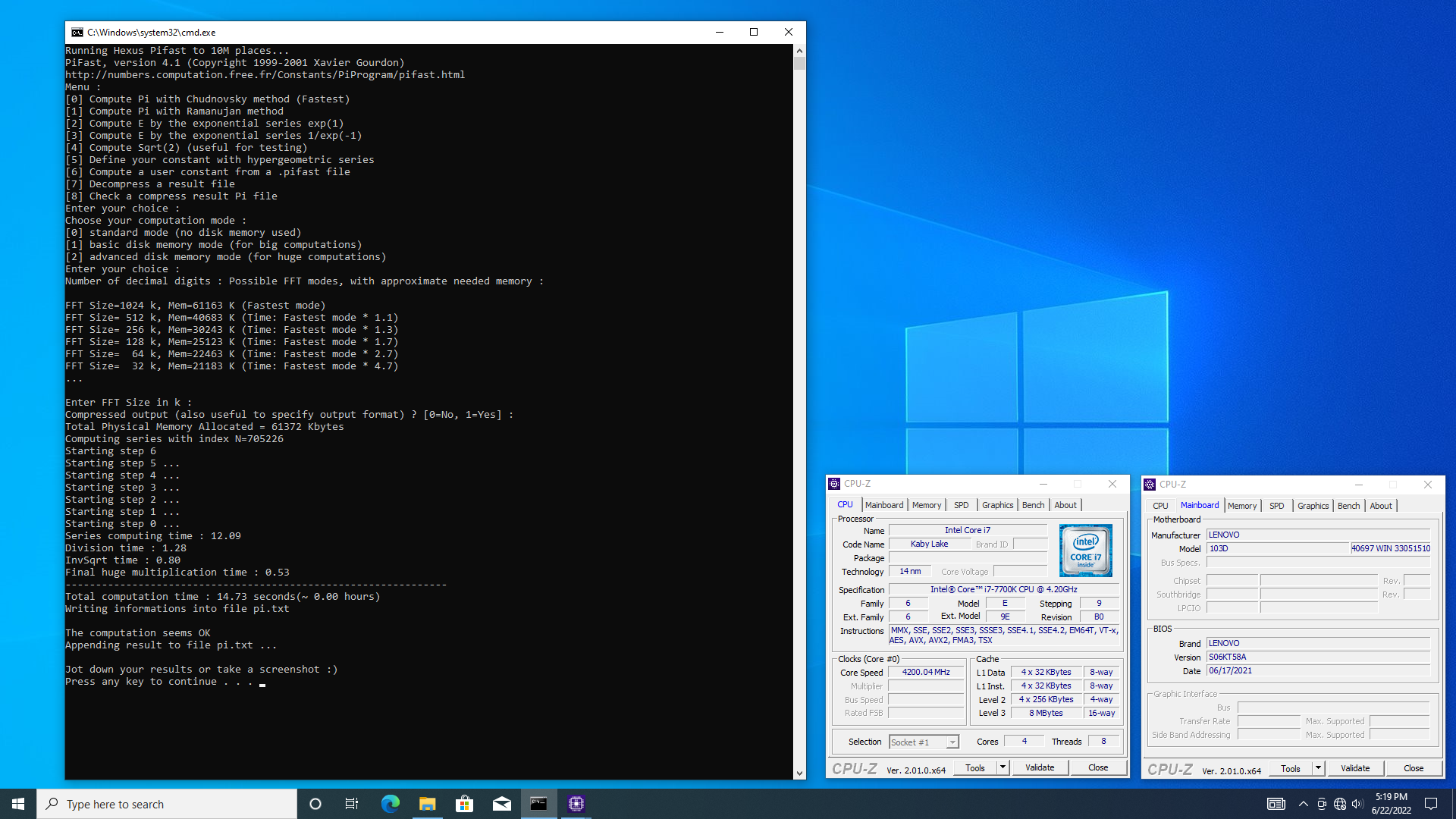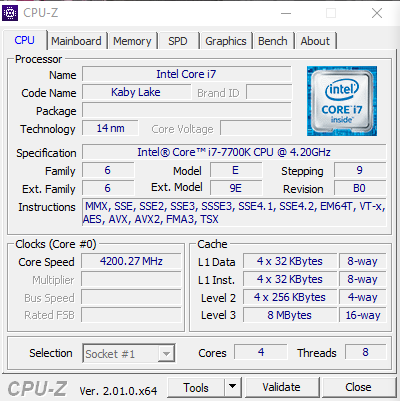Submission Detail
Thursday, 01 January 1970 07:00 | Update at null
Media Gallery
Screenshot

Device, Setup, etc

URL
https://hwbot.org/submission/5024399https://www.facebook.com/hakimnu.id/posts/3322407141325259
Information Detail
Hardware: Intel Core i7 7700K
Specs:CPUID : Intel(R) Core(TM) i7-7700K CPU @ 4.2GHz
Architecture : x86
Codename : Kaby Lake
L3 Cache : 8MB
Clock : 4.2GHz - 4.5GHz
Core/Thread : 4/8
TDP : 91W
Technology : 14nm
Socket : LGA1151
IGPU : Intel HD Graphics 630
See more specification...
Software: PiFast
Score: 14sec 730ms
About: PiFastPiFast is a simple benchmark application designed to measure a processor's speed in performing heavy floating-point computations by calculating the value of π (pi) to millions of decimal digits. It works by running a fast algorithm based on the FFT (Fast Fourier Transform) to speed up calculations, and is commonly used to test the stability and performance of single-threaded CPUs. As PiFast only taxes a single processor core and relies entirely on the CPU's computing power and memory efficiency, the resulting times are highly sensitive to clock speed, CPU architecture, RAM latency, and system optimization. PiFast is popular among overclockers as a quick tool to measure performance improvements after overclocking.
Part of the Kaby Lake generation, the Intel Core i7-7700K is a high-end desktop processor released in 2017. It has 4 cores and 8 threads, with a base clock speed of 4.2 GHz and can increase to 4.5 GHz with Turbo Boost.
Built with 14nm fabrication, the i7-7700K has a TDP of 91W, so it requires a good cooling solution, especially in overclocking configurations. As it is a “K” series, this processor has an unlocked multiplier, allowing users to boost the clock speed higher with a motherboard that supports overclocking.
For graphics, the processor comes with Intel HD Graphics 630, which is sufficient for basic display but not optimal for gaming without a discrete graphics card.
In terms of performance, the i7-7700K is still strong enough for gaming and productivity, but compared to modern processors that have more cores and better efficiency, its competitiveness starts to decline, especially in multi-threaded applications.
* Notes:
